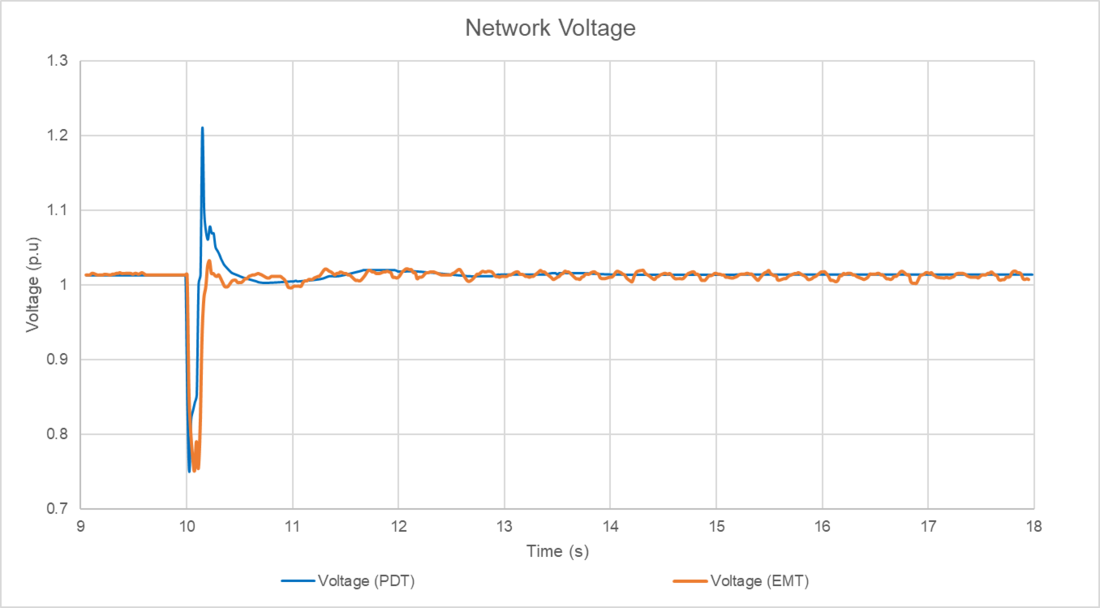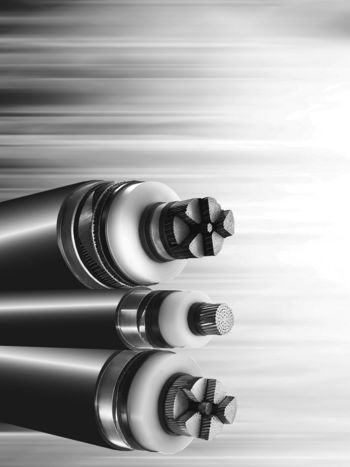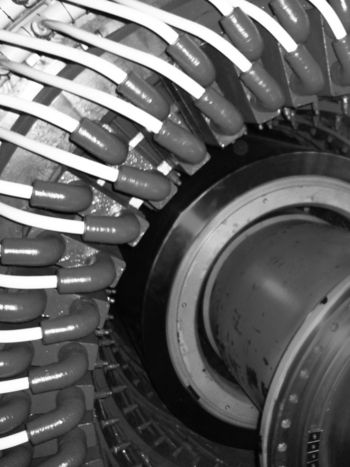Electromagnetic transient simulation models for large-scale system impact studies in power systems having a high penetration of inverter connected generation
Power systems around the world are transitioning to significantly higher shares of inverter-based resources (IBR) with fewer synchronous generators remaining online. IBR and synchronous generators have fundamentally different dynamic performance characteristics. System dynamics and technical needs are therefore vastly different between synchronous and IBR dominated power systems, and these differences will become greater as IBR uptake increases in the power system. Reductions in system strength, inertia, damping of small-signal oscillations, fault contribution, and other synchronous characteristics are the result of the transition to higher penetration of IBR in comparison with conventional power systems with a dominance of synchronous generators.
Members
Convenor
(AU)
B. BADRZADEH
M. DAVIS (AU), S. GOYAL (AU), S. GROGAN (AU), J. LU (AU), F. VILLELLA (BE), J. MAHSREDJIAN (CA), D. MUTHUMUNI (CA) F. FERNANDEZ (DE), A. KURI (DE), L. DALL (DK), H. SAAD, (FR), M. VAL ESCUDERO (IE) AND J. SCHMALL (US)
Corresponding Members
A.S. NETO (BR), A. ISAACS (CA), D. KELL (CA), J. V. NAVA (CA), A. REZAEI ZARE (CA), O. SAAD (CA), Y. CHEN (CN), A. PASHAEI (GB), S. SAHUKARI (GB), P. POURBEIK (US), L. XU (US)
The need for wide-area electromagnetic transient (EMT) modelling
These changes in system characteristics have caused new and emerging power system phenomena. These phenomena either did not previously exist or when they did, they manifested themselves on a limited scale and only in a small part of the power system. Energy transition infers that these phenomena are likely to occur more often, will have the potential to impact a larger part of the power system, and their absolute impact will be greater than it used to be. This could potentially result in major supply disruptions such as system black events if such phenomena are not understood and addressed pre-emptively. A testament to this widespread impact is the growing need for IBR remediations in real generator connection applications including the need for installation of devices such as synchronous condensers or control system tuning to avoid instabilities.
Figure 1 illustrates the frequency range of different power system phenomena ranging from a few Hz to several kHz often associated with pulse width modulation (PWM) in voltage source converters, and outlines the phenomena for which conventional phasor-domain transients (PDT) models are/not sufficiently accurate.

Figure 1 - Frequency range of different power system phenomena and limits of PDT modelling
Worldwide experiences indicate that conventional power system stability analysis tools have often not been able to predict these phenomena due to the simplifications inherent in these tools. Figure 1 shows an example where the use of EMT modelling allows predicting post-disturbance sub-synchronous interactions between multiple IBR which is not possible with the conventional modelling. The consequence of this inability to predict the problems early enough is that problems might be first experienced during actual power system operation, at which point it is more difficult to address and more disruptive and costly to the connecting party; i.e. if the system operator or network owner needs to invoke a constraint to pre-empt the impact on power system stability or nearby network users. Another approach sometimes adopted is conservative power system operation in the absence of accurate answers based on accurate models, which is an equally inefficient approach and not in the best interests of consumers.

Figure 2 - Voltage oscillation in EMT simulation, not observed in PDT simulation
Detailed whole-system modelling has therefore been increasingly used in recent times in particular in countries/regions with higher IBR penetration to address the problems discussed above. This will facilitate accurate long-term power system planning allowing the identification and resolution of new and emerging phenomena before they manifest in real power system operation. It will also permit a more accurate albeit more involved assessment of the impact of connecting new IBR such as battery energy storage systems, hydrogen electrolyser, solar and wind generation on power system planning and operation. This detailed modelling will also facilitate better understanding of the performance of emerging technologies such as grid-forming inverters and how best they can be designed to meet emerging power system needs and technical requirements in power systems with significantly higher IBR penetration.
Summary of the work conducted by WG C4.56
The key outcomes of this WG include:
- Comparison of conventional PDT tools against EMT tools in power systems with high IBR penetration and their applications and limitations
- The level of details to be included in an IBR EMT model to make it suitable for wide-area system impact studies
- Approaches for whole-system EMT model development
- Model testing and validation for IBR EMT model for high IBR penetration studies
- Practical case studies on how these wide-area EMT models have been used across the world and the insight provided by them which could not have been otherwise provided by conventional PDT models.
The Technical Brochure is organised as follows:
- Chapter 1 discusses relevant ongoing and concluded activities worldwide in particular those of CIGRE and IEEE, elaborates the need for wide-area EMT modelling and outlines recent examples of various jurisdictions worldwide who have used wide-area EMT modelling.
- Chapter 2 compares PDT and EMT modelling with regard to factors such as the level of modelling details included, the accuracy achieved, and examples where PDT is not suitable for power system planning and operation, as well as those where PDT is sufficiently accurate. Various screening methods are discussed, and their merits and applications are compared for making a decision on the necessity of wide-area EMT modelling for each specific scenario, or limiting the number of EMT studies in situations where several tens or hundreds of EMT studies may be required.
- Chapter 3 highlights the importance of vendor-specific site-specific IBR EMT models for generator connection and power system operational studies, and discusses the applications where generic IBR EMT models might be prudent to use including for long-term power system planning studies. Adequate modelling of the IBR and network components including associated control and protection systems, loads and distributed energy resource (DER) are discussed. Lastly a discussion model visibility/transparency/portability is presented recognising the confidential nature of these models due to intellectual property rights contained in those models, and at the same time challenges to make practical and meaningful conclusions from the black-box models.
- Chapter 4 presents a systematic and streamlined approach for developing wide-area EMT network models from the load flow cases, and provides guidance on the principles of network equivalencing for instances where a large part but not the whole power system is represented in EMT. The advantages and disadvantages of other approaches including co-simulation, phasor-domain, and real-time EMT simulation (as opposed to offline EMT simulation) are elaborated on.
- Chapter 5 highlights the importance of model acceptance testing to ensure that individual EMT models are fit for purpose and do not exhibit any unexpected responses before they are integrated into wide-area EMT models. This is done at early stages and before connecting the IBR to the actual power system where no real system measurements is available. Several practical case studies are then presented discussing the use of staged tests, natural network disturbances and hardware-in-the-loop simulation after the IBR gets connected to the network.
- Chapter 6 overviews practical examples of using wide-area EMT model in different countries worldwide including Australia, Belgium, Canada, mainland Europe, and the US. These examples include system strength and adverse control system interactions studies between multiple IBR, designing special protection schemes for the whole power system, interarea oscillations in continental Europe system, protection system studies, and system separation studies for a normally interconnected power system.
Challenges and considerations
Whilst EMT modelling remains a key prerequisite for facilitating the energy transition, several challenges have to be overcome in order for this modelling to be used at the scale PDT modelling has been traditionally used. These challenges and considerations are outlined below:
Roles and responsibilities
Generally system operators and network owners are the only entities permitted to have access to the entire wide-area EMT models. However, these organisations are not generally power system equipment design and control system experts. The use of black-box models provides limited opportunity to make judicious changes in the plant model without unduly compromising other aspects of the performance anyway. On the other hand, although original equipment manufacturer (OEMs) have expert knowledge of their products, it often happens that an optimal control system design and tuning cannot be developed without access to other IBR models, which is not often permitted by power system modelling requirements in various countries.
Control system tuning based on black-box models
As discussed in the previous point
Impact on project timeframe
Despite producing more accurate results, the use of wide-area EMT modelling can increase the overall studies timeframe by up to two times.
Engineering resources required
Traditionally EMT studies have been considered as niche power system studies where the expertise primarily resides in a few specialised consultancy companies. The use of wide-area EMT modelling for day-to-day power system studies has challenged this status, resulting in the need for several more power system modelling engineers with EMT modelling and analysis capabilities.
Computing resources required
Wide-area EMT studies in large-scale power system could take between 1 and 10 hours depending on the size of the system and computing resources used. The use of highly capable on-site computing resources will reduce the computational time, still in the order of one or more hours, however it would typically cost several hundred thousand dollars. Cloud computing has been emerging as a more cost-effective approach
The need for clear and upfront modelling requirements
Systematic methods for developing detailed IBR EMT models from the actual control code of the IBR is widely used across most OEMs. This approach has reduced the time required to develop and validate such models. Nevertheless, clear and upfront modelling requirements are essential so that OEMs will have sufficient time to develop, test and validate these models, and can provide the level of details sought without compromising their IP. This is becoming more important as blackbox models are becoming less insightful in scenarios where adverse control system interactions between several IBRs is the main point of interest.





